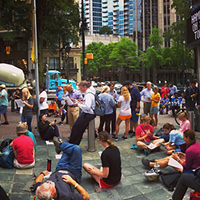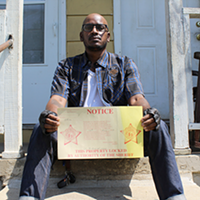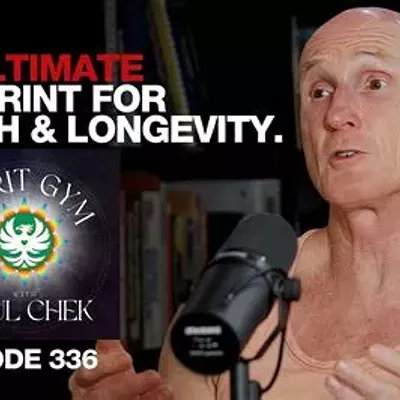To hell with cookie-cutters
Carrboro-based writer Brockton McKinney talks about creativity and gives advice for Charlotte Comicon goers
By Corbie Hill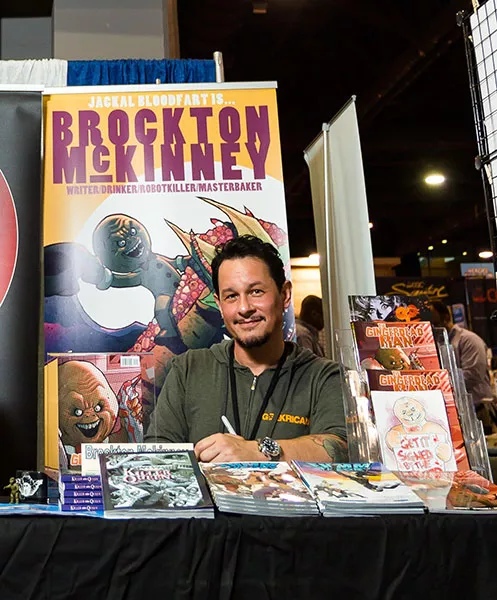
Brockton McKinney will be at Charlotte Comicon on Aug. 7. (Photo by Patrick Sun)
In Brockton McKinney and Dave Dwonch's upcoming comic book Party Monster, one of the characters has a kaiju sniper rifle — that is, a gun built to take down Godzilla-sized monsters. So McKinney contacted Rodrigo Solsona, a Brazilian artist who goes by the name Magenta King, to design it.
"It's huge. It's got notches in it," McKinney says, describing the initial idea. "The girl who uses it is badass."
The sketch he got back exploded the concept — and blew his mind. Instead of a mechanical gun, Magenta King designed a living weapon made from a piece of a monster. From one happy accident, McKinney excitedly explains, a whole host of narrative options opened up. They named this exciting new weapon Nemo and decided its user could talk to it. McKinney is thrilled.
He recalls this from his office inside of his Carrboro house, appropriately surrounded by his beloved Godzilla figurines. On one wall are shelves on top of shelves full of b-movies on VHS, and there are animals everywhere — cats and dogs inside; chickens and rabbits in pens on his wooded lot.
But comic books are his life: McKinney is the writer behind titles like Ehmm Theory and Gingerdead Man, but also the creative director for both NC and Oak City Comicons, held in Durham and Raleigh, respectively. On Sunday, he comes to town as one of Charlotte Comicon's many guests, bringing issues of his first all-ages book, Zoe Dare.
It's a good feeling, he says, to finally have his name on a book his teenage daughter can take to school without being sent to the principal's office.
"I'm used to slapping kids' hands away," McKinney laughs. "'Please don't open that Gingerdead Man book! You can't see that!'"
Gingerdead Man's slasher film-derived absurdist violence is the kind of thing McKinney is known for, though he'd wanted to write a comic for all-ages for some time. Then he ran into his friend Andrew Herman at a party, and the Texas writer and illustrator suggested a comic book series about a stuntwoman named Zoe Dare. Herman and McKinney both love stunt legends Hal Needham and Jackie Chan, and McKinney was immediately onboard.
This kind of creative collaboration sounds like the foundation of good comic work. Granted, there's a division of labor, with many comics having three or four different people responsible for the final result — one writer, one penciler, one inker and one colorist. This division of labor is essential when it comes to cranking out comics every 30 days. It's an assembly line of sorts, sure, but it's also a collaborative environment.
"It's a pretty standard process," McKinney says. "It obviously starts with the concept."
If it's a creator-owned book like Zoe Dare — that is, one with new characters and new situations — the writer figures out how long the series should go, then creates an outline. This part is fun, McKinney says. Usually he goes into a dark bar, orders a scotch, and unloads into his notebook. Whatever comes to mind, be it characters or dialogue, he scribbles it down. The more he creates this way, the better, as the comic book script format is tedious, inorganic and far less enjoyable to him than writing screenplays or prose fiction.
Each panel on each page must be described: who or what's in it? What's the point-of-view? What's being said? Is there descriptive text? "That's the first panel," McKinney says after rattling off all these questions. "Page one, panel two, you're continuing — you're just stopping and starting over and over again. There is no better way to get crappy dialogue than to have me just go in with nothing."
Once he's done writing, it goes to the artist, the penciler and the colorist, who all engage the story according to their gifts. Sometimes the end results are thrilling and unexpected, like Magenta King's kaiju sniper rifle, and sometimes the best results come from the writer leaving his script vague enough for the rest of the assembly line to plug in their own creative talents.
"You get better results if you give people the room to do stuff," McKinney says. "I know where to pick my fights."
BROCKTON'S CHARLOTTE COMICON TIPS
• "It's a one-day show and it runs about seven hours, so my first tip is take a lap. Check the place out. See every table, every room. Just wander, look at stuff, take notes."
• "If you see something that you absolutely love ... go ahead and get it." If you see some cool, rare item, it's likely you're not the only person hunting for such a thing. It won't be there later, so don't wait.
• "Be respectful for the people who are behind the table. For a lot of these guys, this is how they make their living."
• "If you're speaking to a creator, an artist — they want to talk about their comic books, they want to talk about their stuff, but limit the amount you're doing." Don't dwell on minutiae. They want to meet fans, sure, but they're also here to do business. If you monopolize their time, they're doing less of both things.
• If you have an idea to pitch to a creator, ask for their email address or see if they'll grab a drink with you later. Again, don't monopolize their time.
• Always ask before taking a cosplayer's picture, and don't touch anybody's costume. Cosplayers hate that.
• Make sure you're not blocking the aisle. If you want to get a picture of a cosplayer, ask them to step to the side. They get it.
The Deal on Zoe Dare
In Zoe Dare #1, Brockton McKinney and Andrew Herman waste no time getting to the action: by the third page, Zoe launches a motorcycle off the top of a Vegas hotel. Zoe is fearless, hotheaded and only slightly grounded by her mohawked sister Danni, a mechanical genius accompanied by two bickering robots of her own invention. In the best sci-fi tradition, it's this gang of leap-before-you-look misfits that has to somehow save the world.
Speaking of...
Latest in Cover story
More by Corbie Hill
-
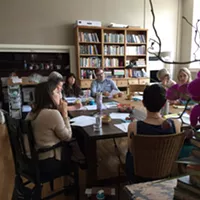
Create Charlotte Lit and They Will Come
Mar 29, 2017 -
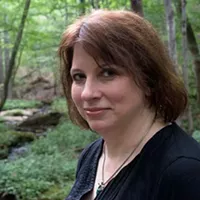
Julie Funderburk opens up about her debut book of poetry
Nov 30, 2016 -
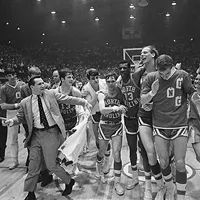
Art Chansky discusses Game Changers
Oct 12, 2016 - More »
Calendar
-
 RuPaul's Drag Race Werq The World Tour 2025 @ Ovens Auditorium
RuPaul's Drag Race Werq The World Tour 2025 @ Ovens Auditorium -
 Boulet Brothers Dragula: Season 666 Tour @ N.C. Music Factory
Boulet Brothers Dragula: Season 666 Tour @ N.C. Music Factory -
 Jim Norton @ The Underground
Jim Norton @ The Underground -
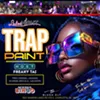
Trap & Paint + Music Bingo @ Blush CLT
-
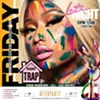
Trap & Paint (Hookah Edition) @ Blush CLT








